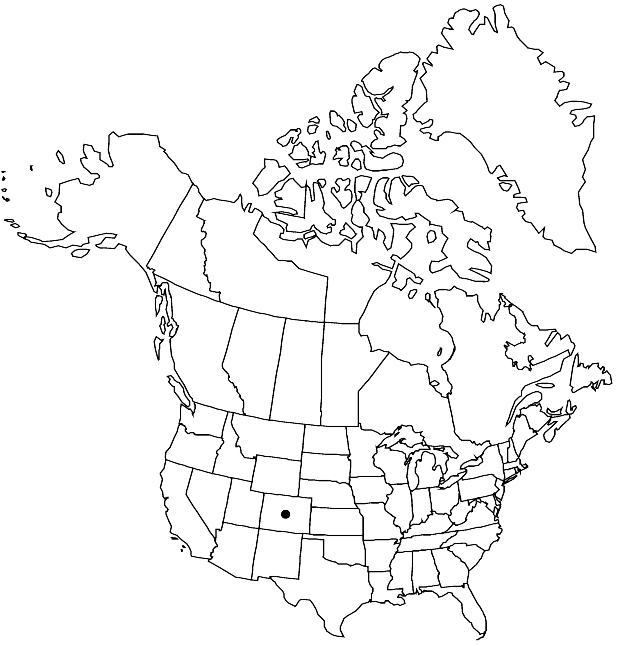Difference between revisions of "Physaria parviflora"
Novon 12: 326. 2002.
FNA>Volume Importer |
FNA>Volume Importer |
(No difference)
| |
Revision as of 20:20, 24 September 2019
Perennials; caudex simple or branched; densely (silvery) pubescent, trichomes (irregularly radiate), 6–8-rayed, rays furcate or bifurcate, fused at base. Stems several from base, prostrate to decumbent, (usually unbranched, rarely branched distally), 1–3 dm. Basal leaves (tufted); blade broadly obovate, 1–2 cm, margins entire or with 1 or 2 broad teeth, (apex rounded to obtuse). Cauline leaves: blade oblanceolate to nearly oblong, similar to basal, (base cuneate), margins entire. Racemes (secund), loose, (elongated in fruit). Fruiting pedicels (recurved), 6–8(–12) mm. Flowers: sepals (yellowish), elliptic to lanceolate, (2–)3–4 mm; petals spatulate, (3.9–)5–7 mm. Fruits (usually pendent), elliptic to subglobose, usually slightly compressed (latiseptate), 3–4 mm; valves densely pubescent, sometimes with scattered trichomes inside; ovules 4 per ovary; style ca. 3 mm. Seeds somewhat flattened.
Phenology: Flowering Jun–Jul.
Habitat: Shale of steep slopes, rock crevices, ledges, canyon sides, shale-marlstone
Elevation: 2100-2700 m
Discussion
Of conservation concern.
Physaria parviflora is known from the Parachute Creek Member of the Green River Formation, Rio Blanco County.
Selected References
None.
